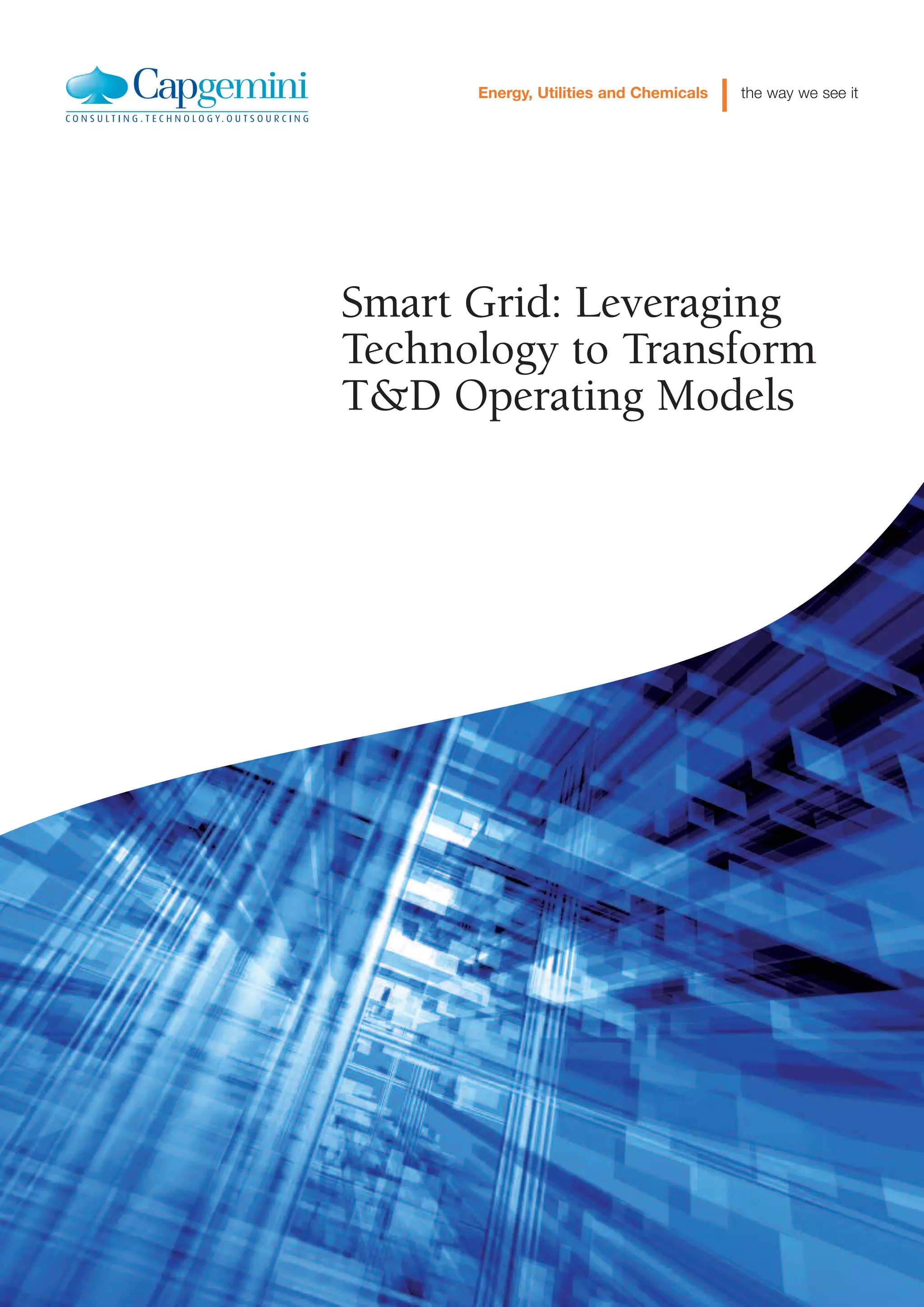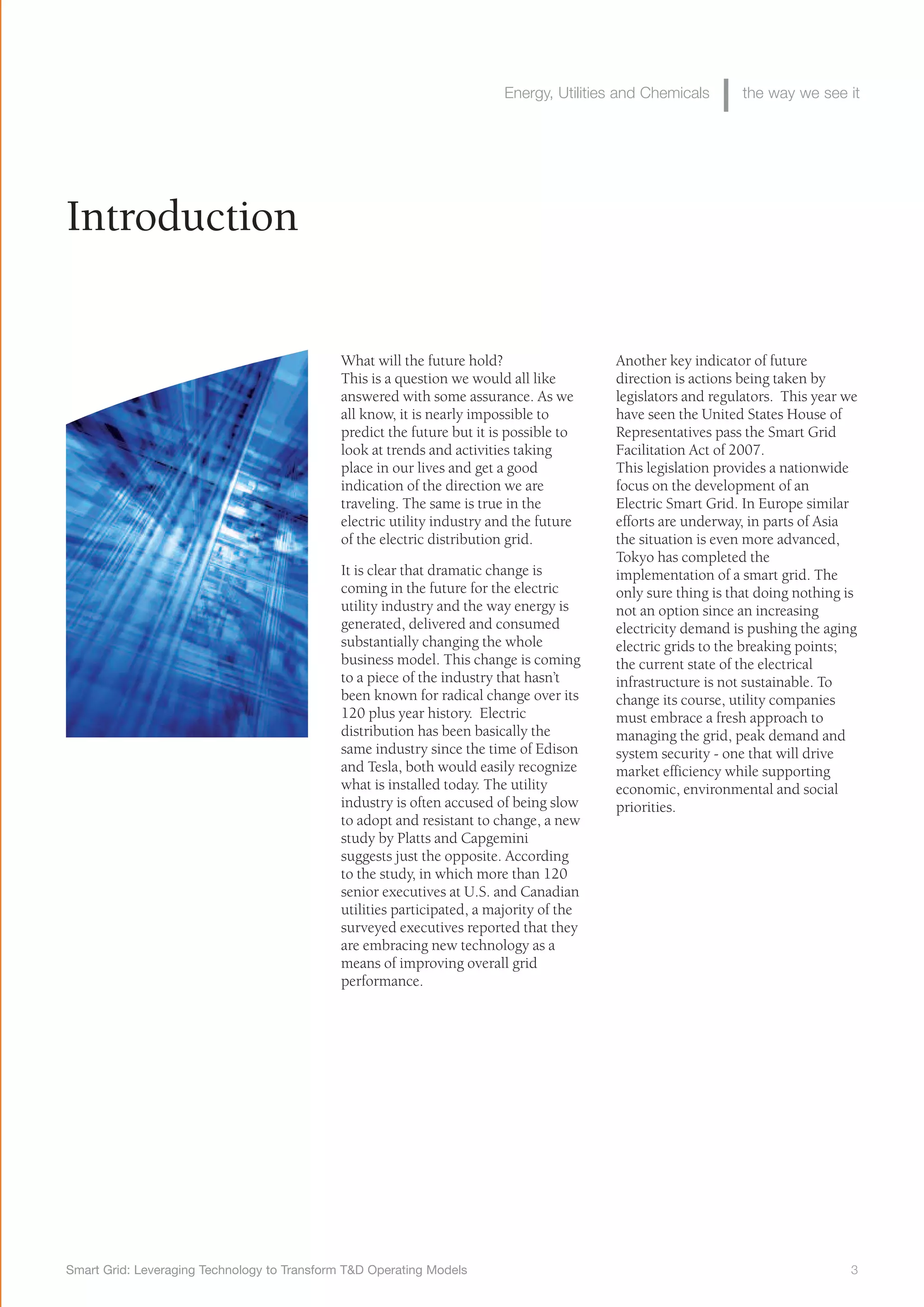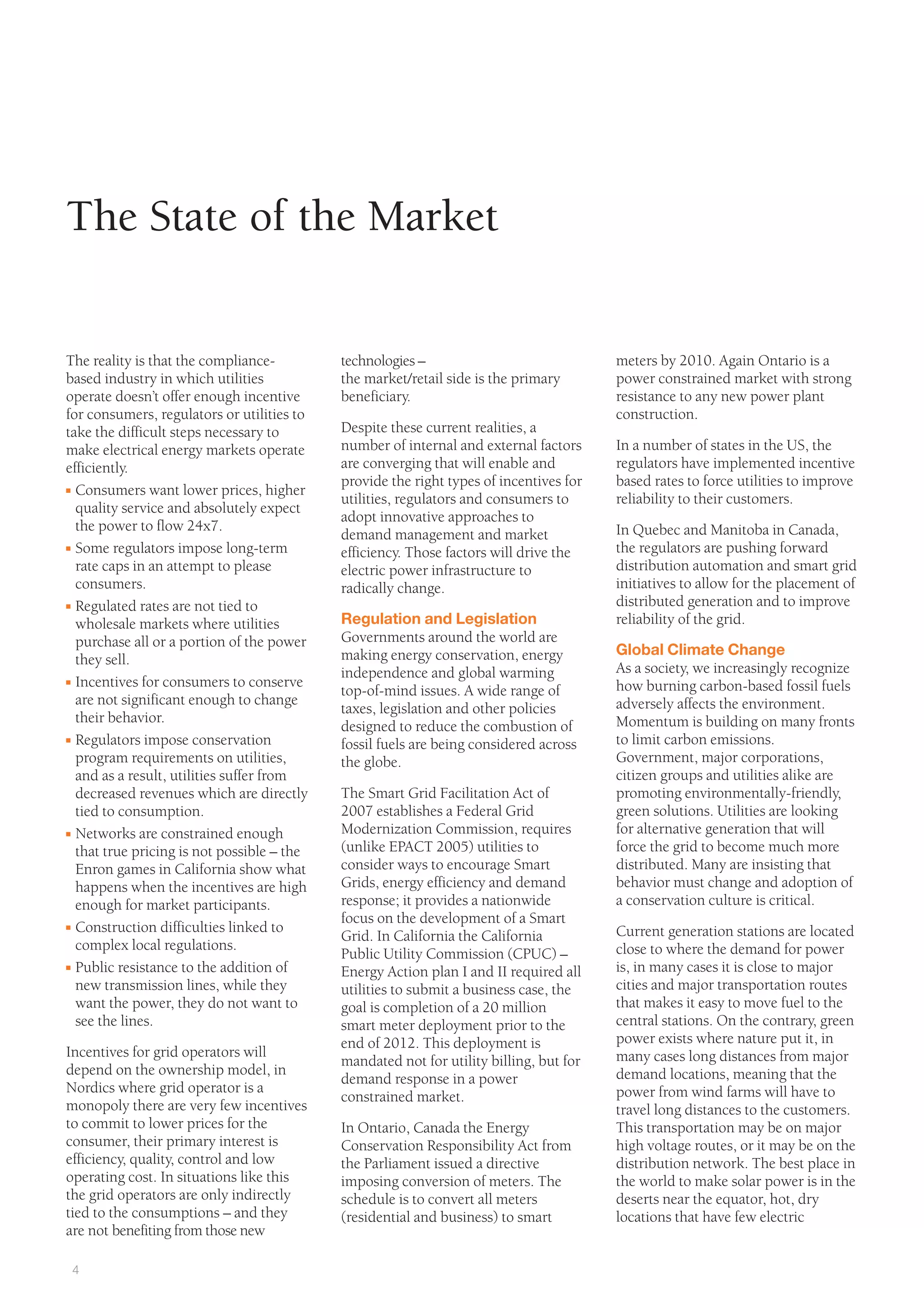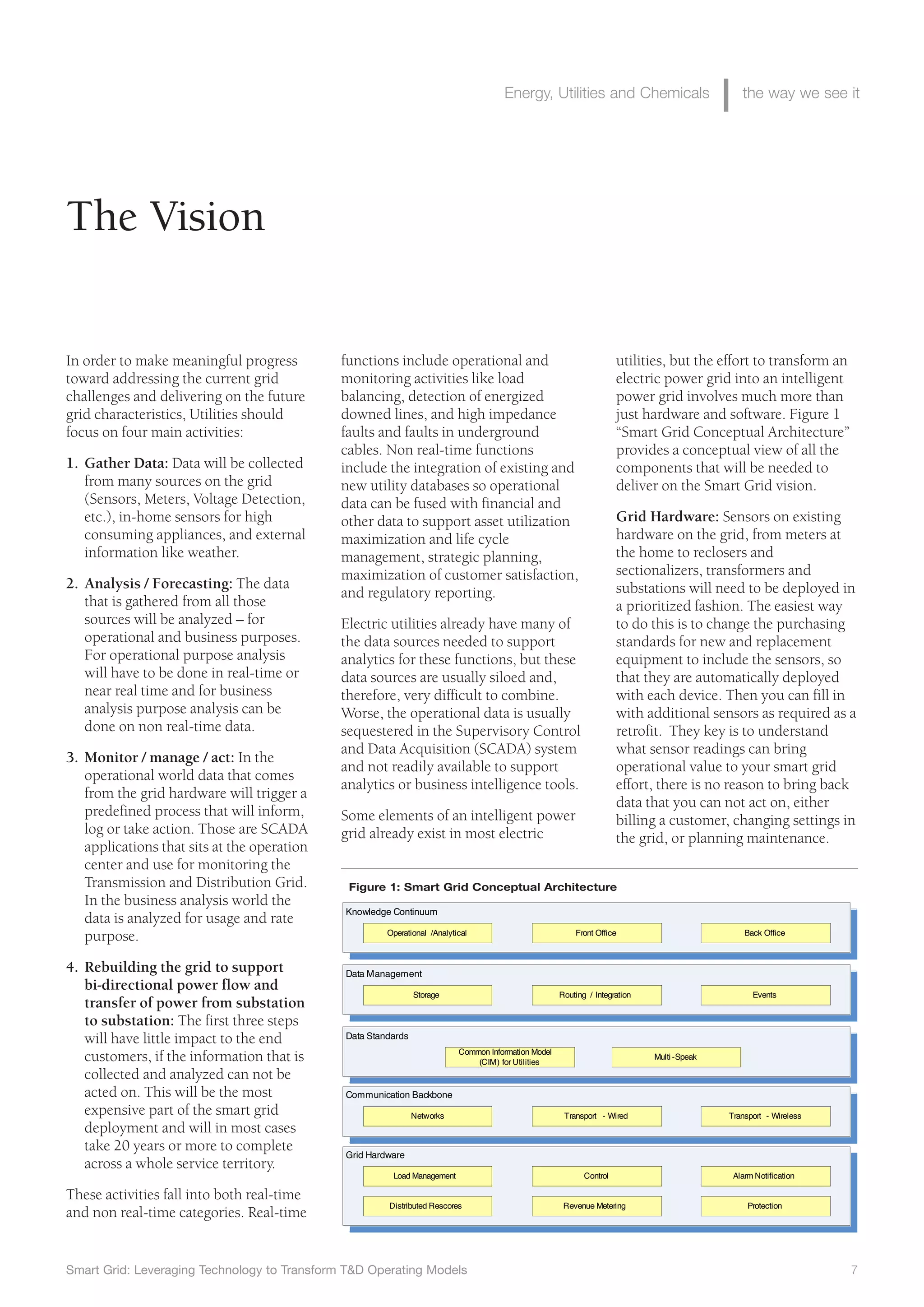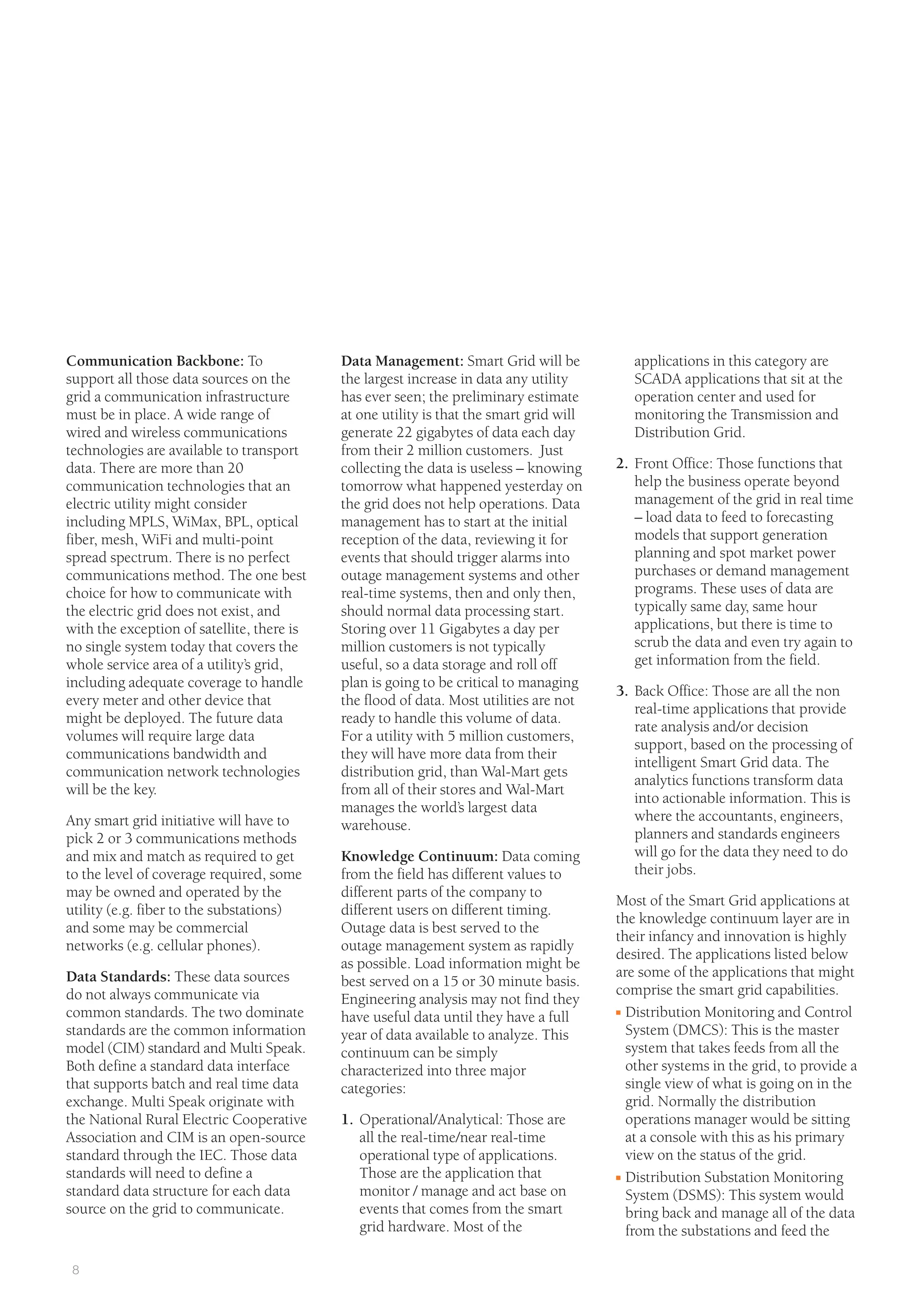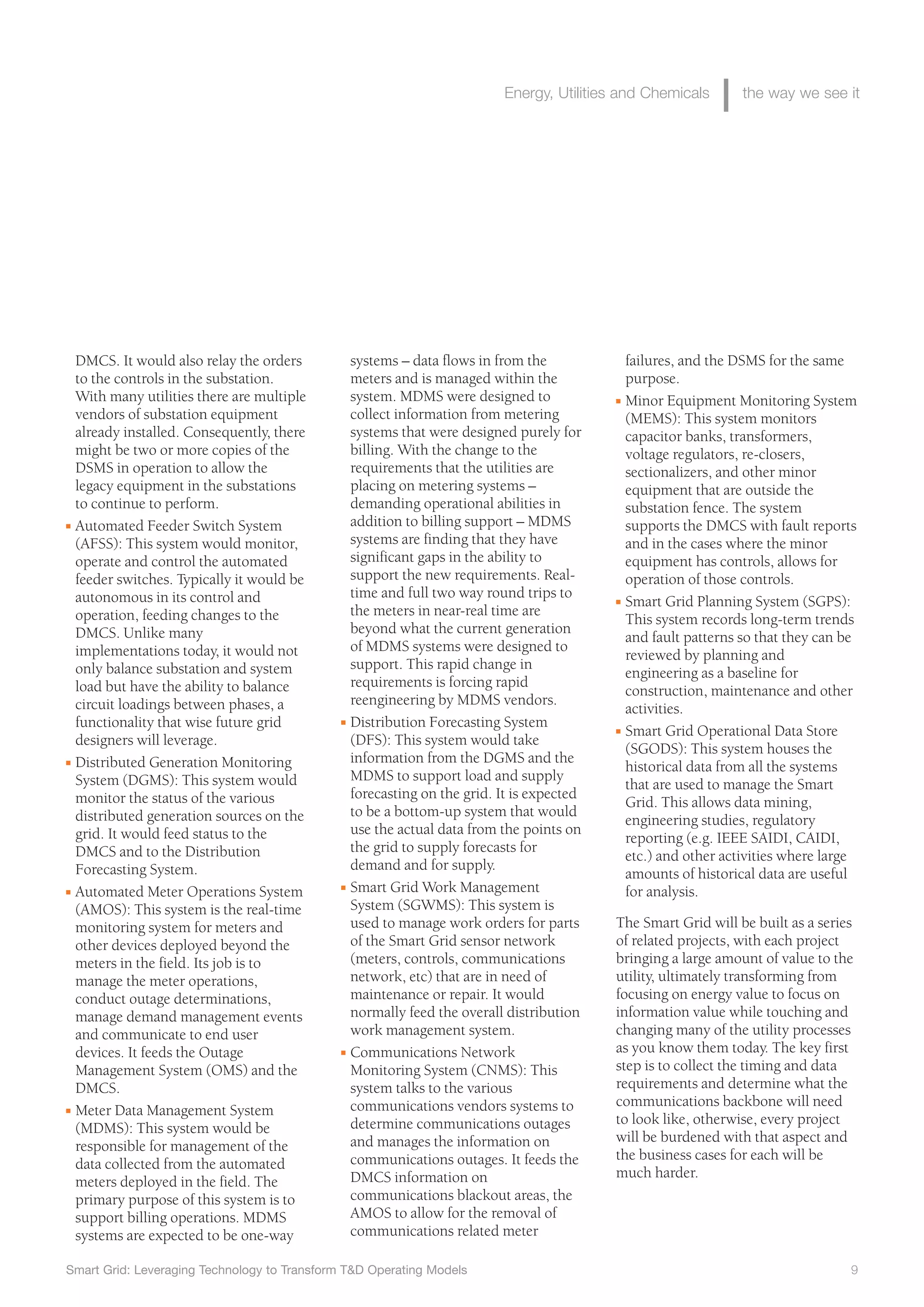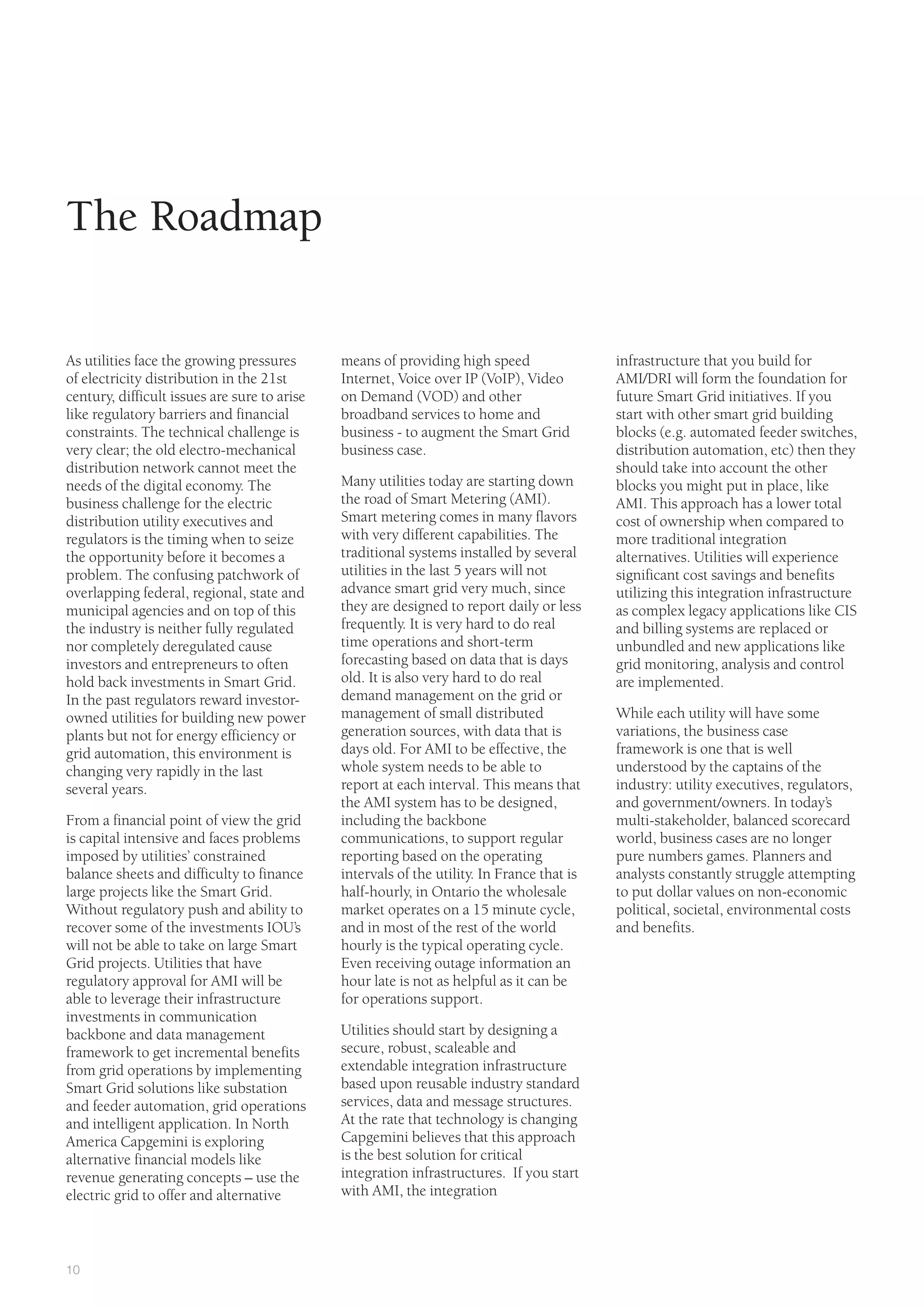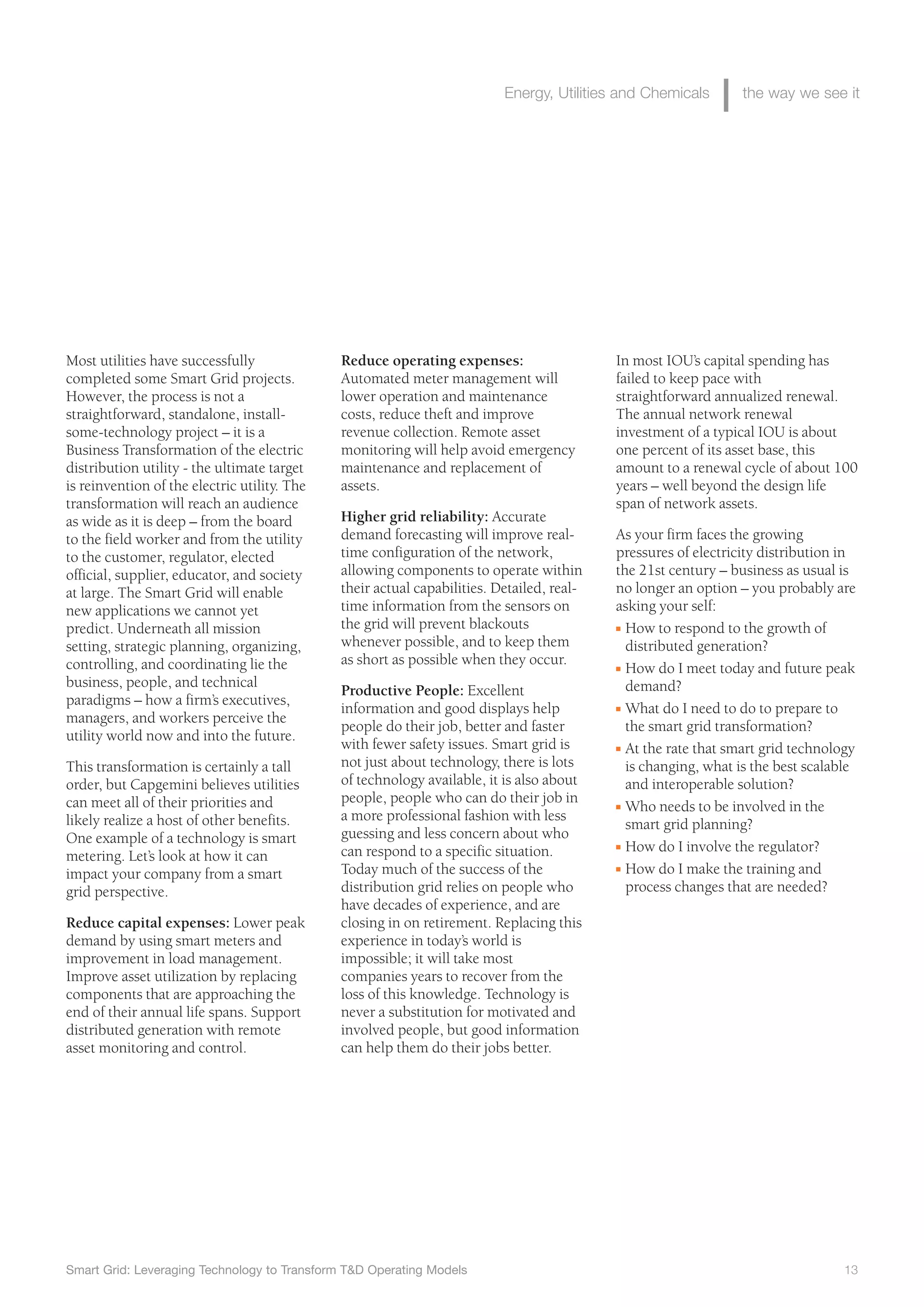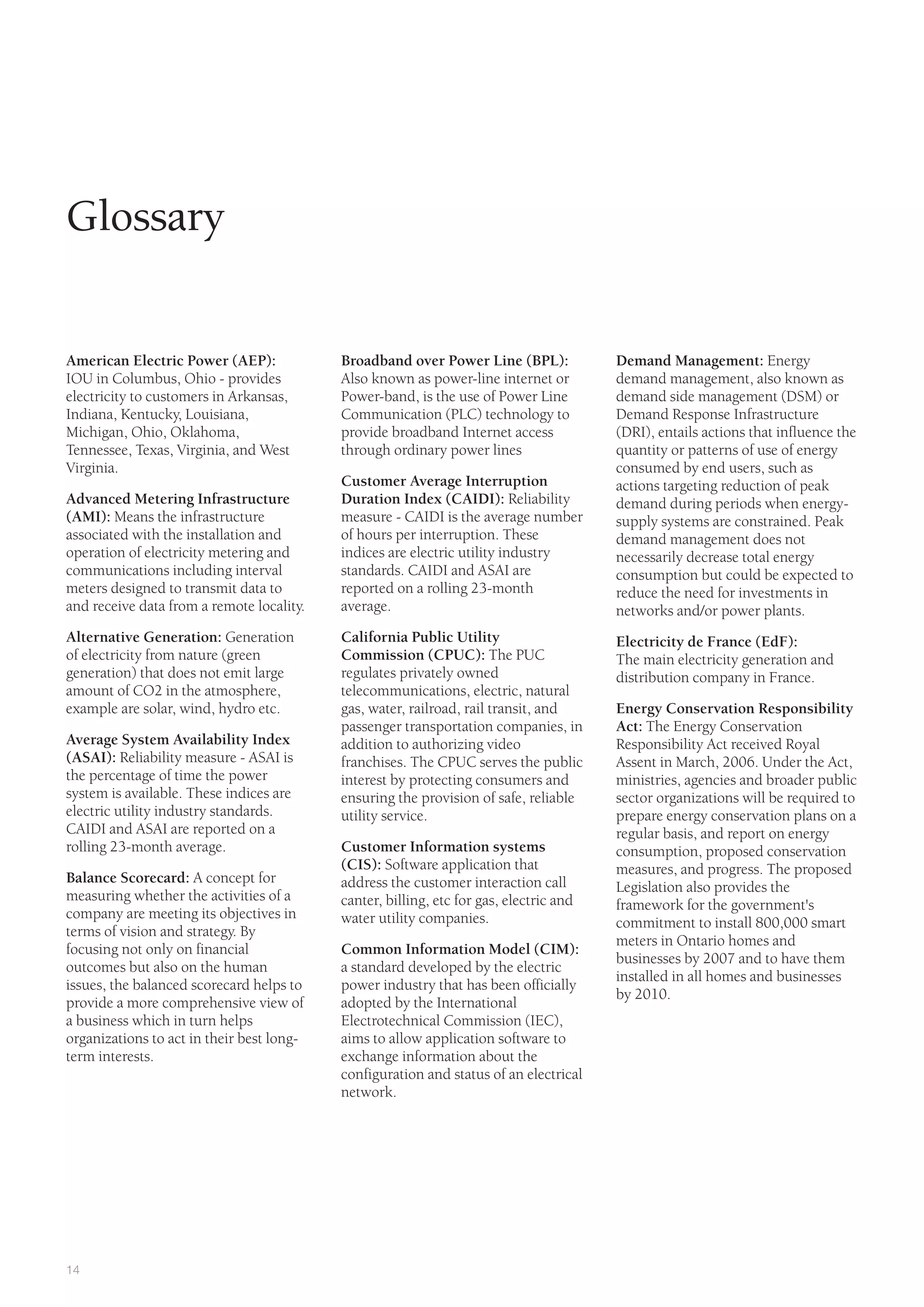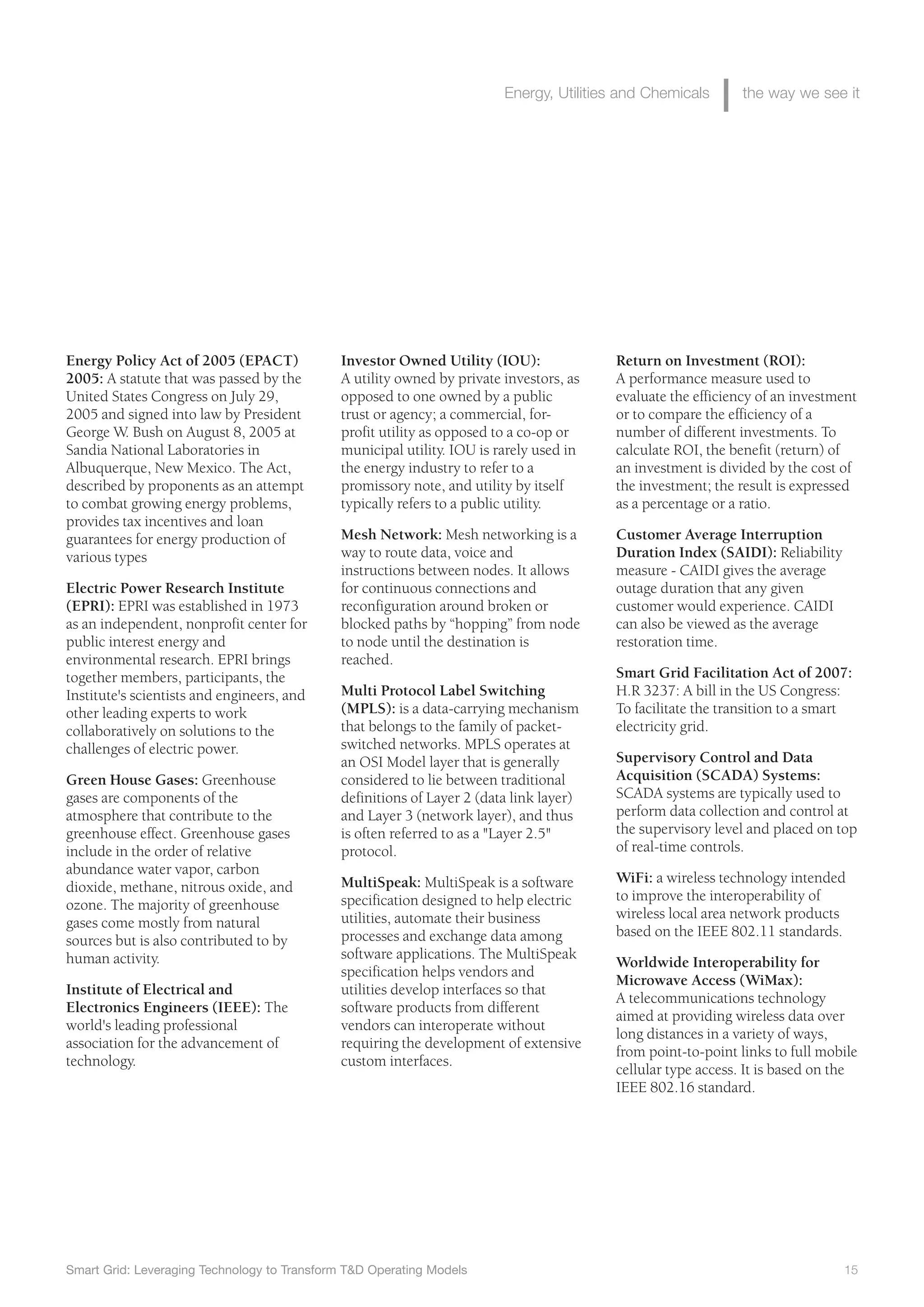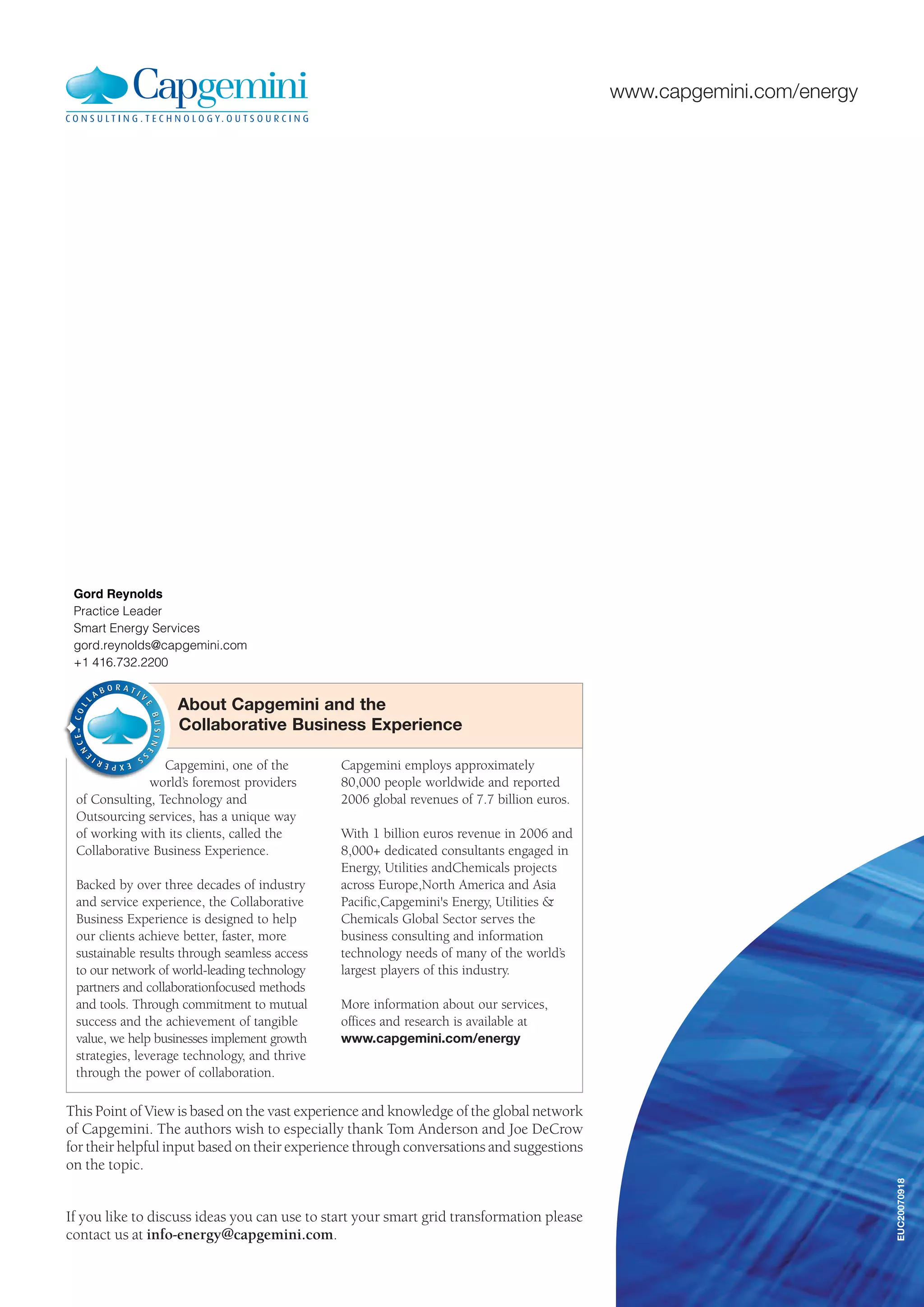The document discusses the vision for transforming electric transmission and distribution (T&D) systems into "smart grids" through the use of new technologies. It outlines drivers for change such as aging infrastructure, climate change, customer expectations, and regulatory pressures. The vision is for a grid that can autonomously restore power, support distributed energy resources, provide power quality, and operate with lower costs. This will require upgrading grid hardware with sensors, analyzing collected data in real-time and non-real-time, monitoring and managing the grid, and rebuilding infrastructure to allow bi-directional power flows. The transformation is an evolution that will take years or decades to fully implement across utility service territories.
